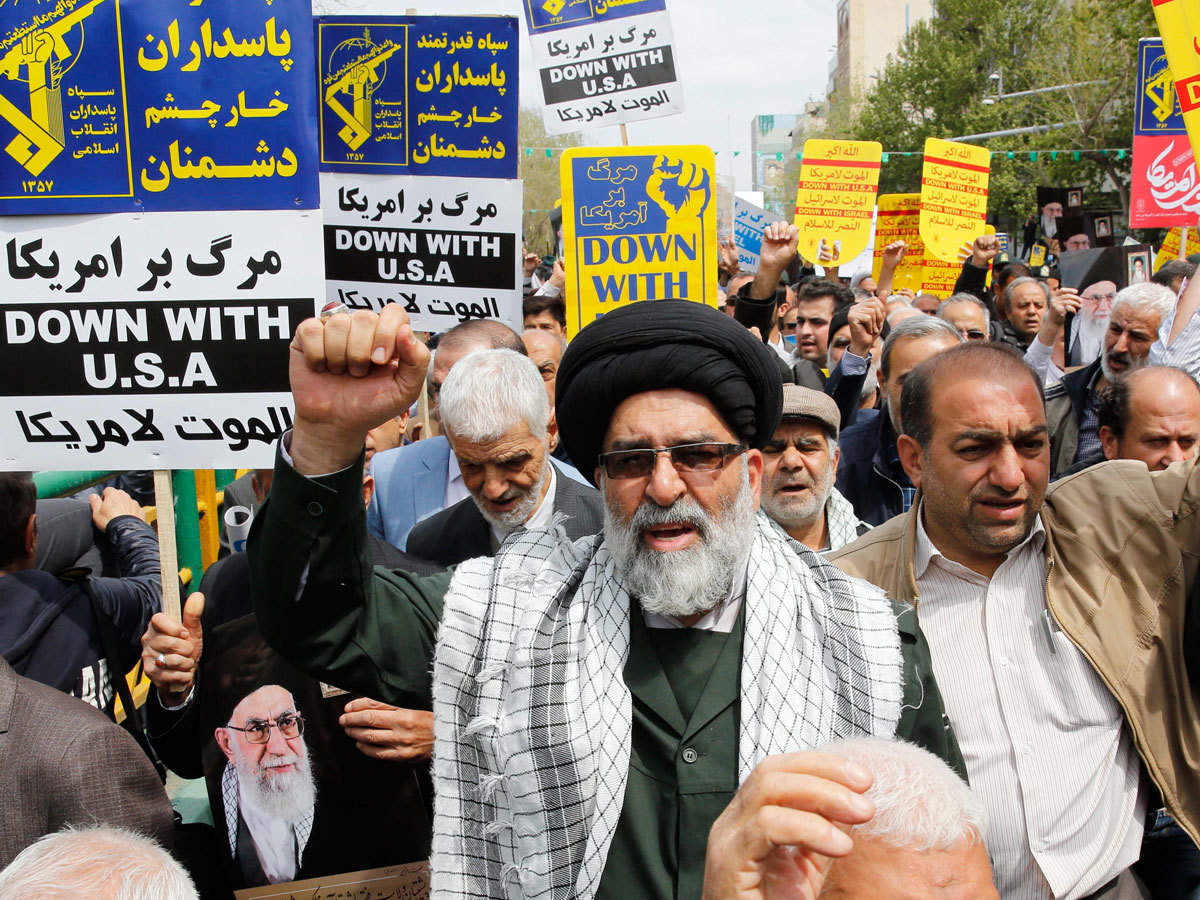
Tempers have been flaring between Washington and Tehran. In the United States, the separation, to use the title of the film by the Iranian filmmaker Asghar Farhadi, had already been declared on the occasion of the 1979 revolution, whose 40th anniversary we are celebrating. But the two sides never really gave up the idea of gluing the pieces back together. Under the Clinton and Obama administrations especially, small steps toward a reconciliation were taken … without resulting in any true warming of bilateral relations.
The hopes that came with the July 2015 nuclear deal vanished when the Trump administration broke the dialogue that his predecessor began, initiated a rapprochement with his Israeli and Saudi adversaries and decertified the 2015 nuclear deal, before unilaterally repealing it and re-imposing a system of sanctions. Washington’s tone toward Iran has continued to harden since then, as we have gone from a populist American government (at the beginning of 2017) to a conservative one (at the end of 2017), and as that government has become more and more neoconservative today, with people like Mike Pompeo and John Bolton, who hide neither their hatred for the Iranian regime nor their desire to do away with it.
But the conversation has become heated recently. By declaring that he supported Benjamin Netanyahu and Israeli sovereignty over the part of the Syrian Golan occupied by the Hebrew State, Donald Trump provoked the ire of the Islamic Republic. But the high point was reached with the American decision to put the Islamic Revolutionary Guard Corps, the Iranian regime’s ideological army, on the blacklist of foreign terrorist organizations. American authorities themselves recognized that this was the “first time” that “a part of another government” was targeted. Tehran quickly responded in kind: It now considers “the American regime a state sponsor of terrorism” and American forces in the Middle East “terrorist groups.” The escalation is undeniable.
During this period, relations between the Islamic Republic and members of the European Union seemed, until only recently, to be escaping this escalation. After the 2015 nuclear deal, Paris, London, Berlin and Brussels hastened to renew diplomatic ties with Tehran, as Airbus and Total have rushed to the country of the mullahs to sign juicy contracts. Even after the United States’ decision to pull out of the 2015 nuclear deal, European administrations have been reassuring, promising their Iranian partners an alternative payment system meant to help them bypass American sanctions. But putting this famous Instrument in Support of Trade Exchanges into action has proved to be more complex than originally thought, as it interferes with the survival of a partnership between Europe and Iran (the Joint Comprehensive Plan of Action).
Gradually, on top of diplomatic pressure from the United States, other impediments arose: suspicions of Iranian terrorist activity in France, Denmark and the Netherlands, and worries raised by the Iranian ballistic missile program, freed from the terms of the now null and void 2015 nuclear deal.
’Illusions’ and Europe
Months have passed, Iranian leaders are getting impatient and the Islamic Republic’s ship seems to want to leave the EU’s port. In a recent interview given to Khamenei.ir, the Supreme Leader’s official site, Javad Zarif, head of Iranian diplomacy and architect of the JCPOA, confirmed that Europeans “lack enough power to resist the U.S. sanctions” against Iran and, to be honest, never really had the means to do it. Moreover, the man who was one of the main instigators of the rapprochement with Europe even confides that Iran “never placed [its] hope on Europe.”
Given that there is American, Israeli and Saudi intransigence on the one hand, and European hesitation on the other, a third way is opening up for Iran. The country could look to China, Russia and the countries of the Shanghai Cooperation Organization with whom it shares interests, values and common challenges. Zarif has confirmed as much, saying that the Islamic Republic is turning firmly toward its traditional partners around whom a block of Eurasian states is already emerging, and that this will now be the future direction of the country’s foreign policy. Liberated but lost for a long time, the Iran of the mullahs is constantly distancing itself from the liberal core and getting closer to the realist and authoritarian periphery that is looking more and more like a hub of alternative power that could, in the coming years, thwart Western interests.

Leave a Reply
You must be logged in to post a comment.